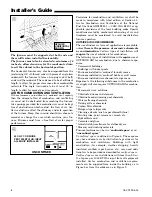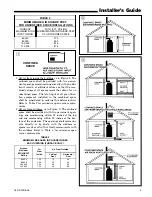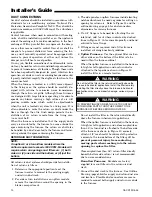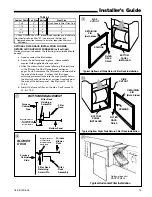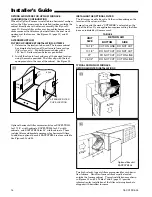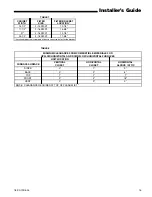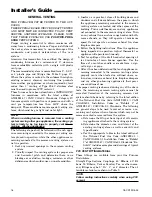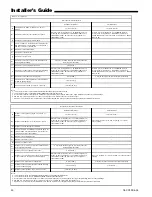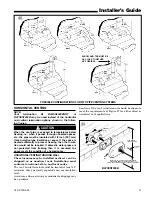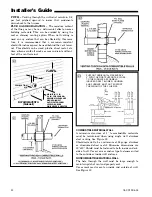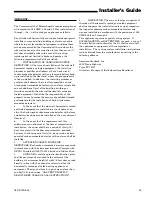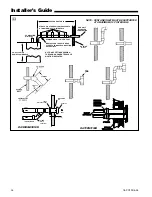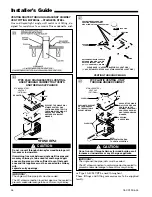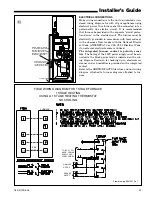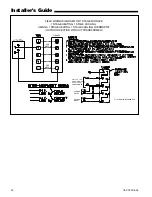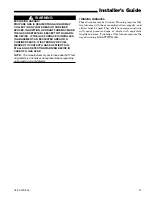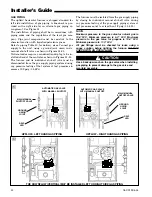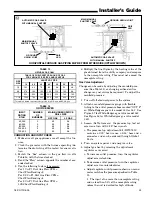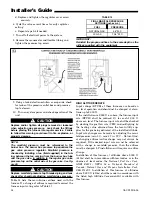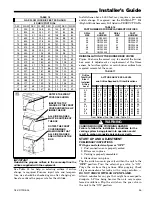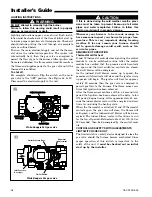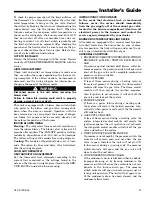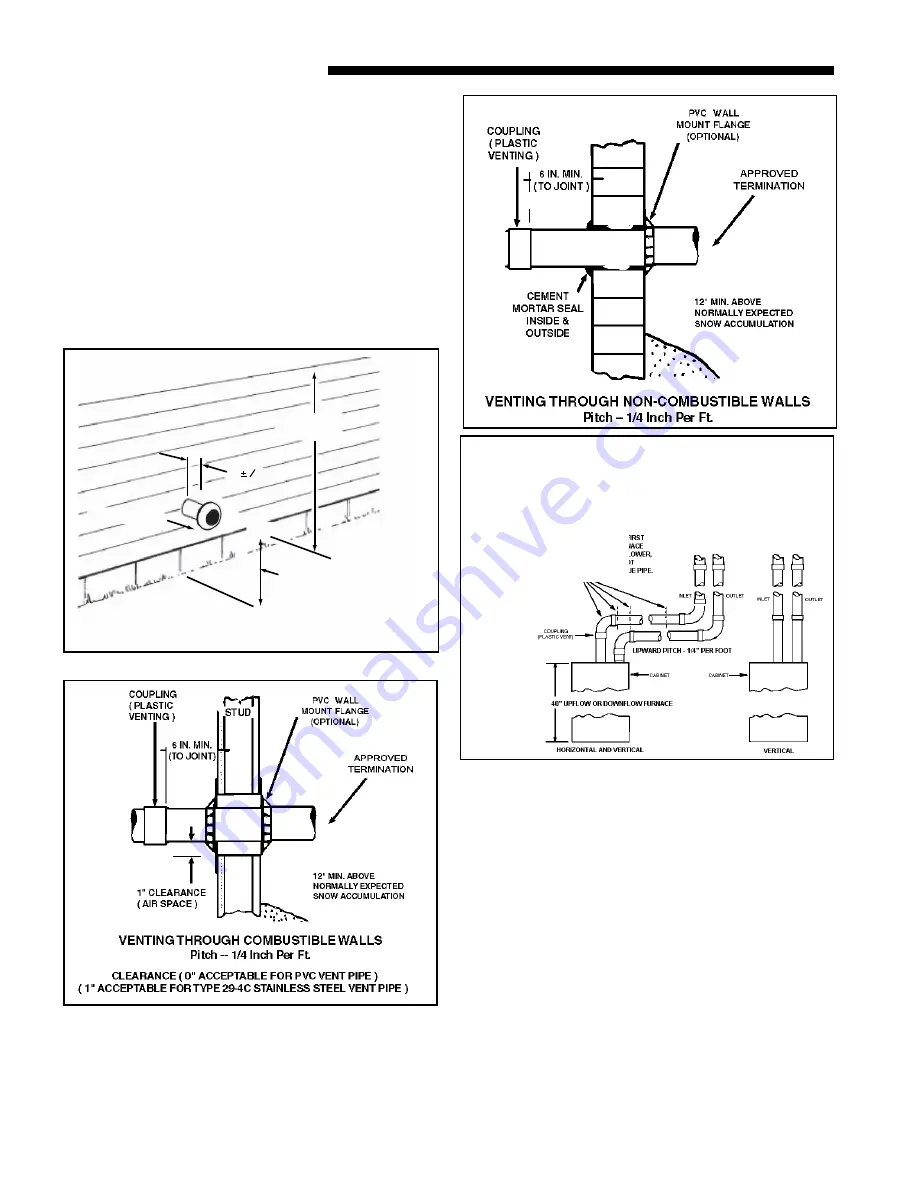
22
18-CD19D5-25
Installer’s Guide
PITCH –
Venting through the wall must maintain 1/4"
per foot pitched upward to insure that condensate
drains back to the furnace.
FLUE GAS DEGRADATION –
The moisture content
of the flue gas may have a detrimental effect on some
building materials. This can be avoided by using the
roof or chimney venting option. When wall venting is
used on any surface that can be affected by this mois-
ture, it is recommended that a corrosion resistant
shield (24 inches square) be used behind the vent termi-
nal. This shield can be wood, plastic, sheet metal, etc.
Also, silicone caulk all cracks, seams and joints within 3
feet of the vent terminal.
COMBUSTION
AIR
VENT
12" MIN TO
OVERHANG
1"
MAINTAIN 12 IN
(18 IN. FOR CANADA)
MINIMUM CLEARANCE
ABOVE HIGHEST
ANTICIPATED SNOW
LEVEL OR GRADE
WHICHEVER IS GREATER
1
2
"
BAYAIR30AVENTA
(Sidewall)
;
COMBUSTIBLE MATERIAL WALL
A minimum clearance of 1" to combustible materials
must be maintained when using single wall stainless
steel venting. See Figure 32.
Shield material to be a minimum of 24 gauge stainless
or aluminized sheet metal. Minimum dimensions are
12"x12". Shield must be fastened to both inside and out-
side of wall. Use screws or anchor type fasteners suited
to the outside or inside wall surfaces.
NONCOMBUSTIBLE MATERIAL WALL
The hole through the wall must be large enough to
maintain pitch of vent and properly seal.
Use cement mortar seal on inside and outside of wall.
See Figure 33.
c
SUPPORT HORIZONTAL PIPE EVERY 3'
0" WITH THE FIRST SUPPORT AS CLOSE
TO THE FURNACE AS POSSIBLE.
INDUCED DRAFT BLOWER, HOUSING,
AND FURNACE MUST NOT SUPPORT
THE WEIGHT OF THE FLUE PIPE.
z
x

